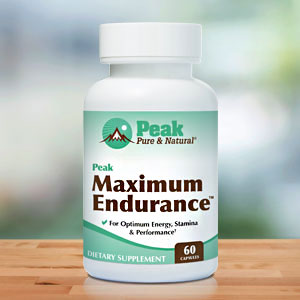If you’re overweight or obese, losing those first pounds may feel like climbing a mountain.
And if you’re in the over-50 crowd, you may feel even more discouraged.
I’m here to tell you there IS a way to start climbing that mountain. No drugs involved. It’s research-based, and it CAN help you control that seemingly ever-present hunger…
Study proves that moderate exercise suppresses appetite
“People understand that exercise helps ‘burn energy.’ A lot of people assume that exercise also increases hunger and energy intake afterwards,” says Professor Timothy Fairchild of Murdoch University’s School of Allied Health in Australia.
But a study authored by Professor Fairchild and a group of experts in exercise physiology disproves this notion.
The study shows that, rather than increasing appetite, moderate-intensity exercise helps to control appetite.
Professor Fairchild notes that this study proves that “even moderate-intensity exercise can have immediate and beneficial effects on appetite control in males with obesity.”
And if you’re intent on avoiding weight-loss drugs, this study has even more good news for you.
“Despite a strong focus on weight loss drugs in society at present, this study shows that lifestyle factors still have a strong and relevant role in helping people to live their healthiest life,” Associate Professor Fairchild said.
“In fact, the hormones which have been shown to increase after exercise are the same hormones which the most successful weight loss drugs are mimicking.”
What is moderate-intensity exercise and how much do you need?
So what exactly qualifies as moderate-intensity exercise?
In short, if your heart rate goes up to 50% or 60% higher than your resting heart rate, you’re doing moderate-intensity exercise.
That means you’re doing an activity that makes your heart beat a little faster and your breathing a bit harder. It’s a level of exercise that feels somewhat challenging but doesn’t make you completely exhausted.
For people with obesity, the CDC recommends at least 150 minutes of moderate-intensity exercise every week. This can be broken down into 30-minute sessions, five days a week.
Walking, water aerobics, and riding a stationary bike are examples of moderate-intensity exercise.
All of the following fit the definition of moderate-intensity exercise:
- Walking two miles in 30 minutes
- Biking five miles in 30 minutes
- Swimming laps for 20 minutes
- Running one and a half miles in 15 minutes
- Doing water aerobics for 30 minutes
- Playing volleyball for 45 minutes
- Playing basketball for 20 minutes
- Jumping rope for 15 minutes
- Walking stairs for 15 minutes
If none of these seem appealing, don’t forget that regular household activities can also qualify as moderate-intensity exercise:
- Washing your car for 45 minutes to an hour.
- Gardening for 30 to 45 minutes.
- Raking leaves for 30 minutes.
- Dancing for 30 minutes.
Mopping, sweeping, and vacuuming can also give you a moderate-intensity workout!
Sources:
Moderate exercise keeps appetite at bay — Science Daily
Acute effect of exercise on appetite-related factors in males with obesity: A pilot study — Physiological Reports
How sedentary people with obesity can ease into regular exercise — Healthline
What Does ‘Moderate-Intensity Exercise’ Mean Anyway? — Cleveland Clinic
Read full article here




